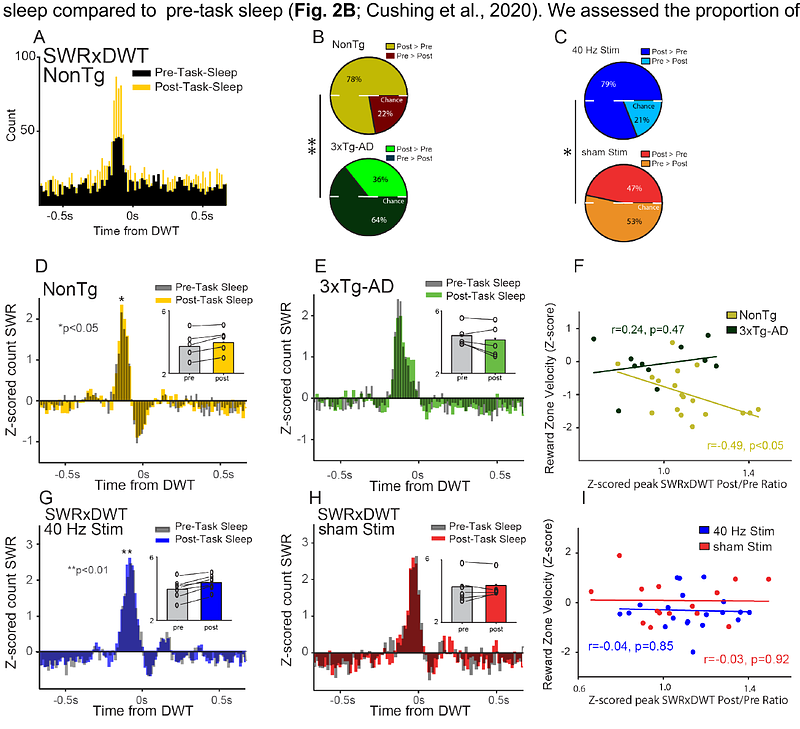Rescuing impaired hippocampal-cortical interactions and spatial reorientation learning and memory during sleep in a mouse model of Alzheimer's disease using hippocampal 40 Hz stimulation

Rescuing impaired hippocampal-cortical interactions and spatial reorientation learning and memory during sleep in a mouse model of Alzheimer's disease using hippocampal 40 Hz stimulation
Cushing, S. D.; Moseley, S. C.; Stimmell, A. C.; Schatschneider, C.; Wilber, A.
AbstractIn preclinical Alzheimers disease (AD), spatial learning and memory is impaired. We reported similar impairments in 3xTg-AD mice on a virtual maze (VM) spatial-reorientation-task that requires using landmarks to navigate. Hippocampal (HPC)-cortical dysfunction during sleep (important for memory consolidation) is a potential mechanism for memory impairments in AD. We previously found deficits in HPC-cortical coordination during sleep coinciding with VM impairments the next day. Some forms of 40 Hz stimulation seem to clear AD pathology in mice, and improve functional connectivity in AD patients. Thus, we implanted a recording array targeting parietal cortex (PC) and HPC to assess HPC-PC coordination, and an optical fiber targeting HPC for 40 Hz or sham optogenetic stimulation in 3xTg/PVcre mice. We assessed PC delta waves (DW) and HPC sharp wave ripples (SWRs). In sham mice, SWR-DW cross-correlations were reduced, similar to 3xTg-AD mice. In 40 Hz mice, this phase-locking was rescued, as was performance on the VM. However, rescued HPC-PC coupling no longer predicted performance as in NonTg animals. Instead, DWs and SWRs independently predicted performance in 40 Hz mice. Thus, 40 Hz stimulation of HPC rescued functional interactions in the HPC-PC network, and rescued impairments in spatial navigation, but did not rescue the correlation between HPC-PC coordination during sleep and learning and memory. Together this pattern of results could inform AD treatment timing by suggesting that despite applying 40 Hz stimulation before significant tau and amyloid aggregation, pathophysiological processes led to brain changes that were not fully reversed even though cognition was recovered.


